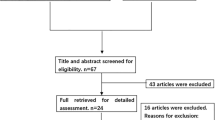Abstract
Purpose
Several methods using various materials have so far been reported to repair pulmonary air leaks, which is an essential problem in general thoracic surgery. Although the efficacy of these materials has been often discussed, the safety has only rarely been examined. This study evaluated the safety of polyglycolic acid (PGA) felt, one of the most commonly materials employed at this institute.
Methods
A total of 1026 patients who underwent a pulmonary resection from January 2000 to December 2007 were enrolled in this study. The status of PGA use, type of surgery, and incidence and type of surgical site infection (SSI) were reviewed retrospectively from the clinical records.
Results
Three hundred and forty-four patients were treated with PGA. Although two patients in the PGA group underwent a reoperation, PGA itself was not causative. In one case, the PGA felt strictly adhered to both the parietal and visceral pleura.
Conclusion
Polyglycolic acid felt can be used safely in general thoracic surgery and did not influence the incidence or type of SSI. Surgeons should be aware of the possibility of adhesion around the material at the time of re-operation, and the criteria of PGA use should be strictly discussed.
Similar content being viewed by others
References
Mangram AJ, Horan TC, Pearson ML, Silver LC, Jarvis WR. Guideline for prevention of surgical site infection, 1999. Hospital Infection Control Practices Advisory Committee. Infect Control Hosp Epidemiol 1999;20:250–278; quiz 279-80.
Morikawa T. Tissue sealing. Am J Surg 2001;182:29S–35S.
Ito H, Nakayama H, Arai H, Karita S, Shotsu A, Fujita A. Prevention of parenchymal air leakage after lung resection; comparison of effectiveness in drug formation of fibrin adhesive (in Japanese). Kyobu Geka 2003;56:1014–1016.
Tansley P, Al-Mulhim F, Lim E, Ladas G, Goldstraw P. A prospective, randomized, controlled trial of the effectiveness of BioGlue in treating alveolar air leaks. J Thorac Cardiovasc Surg 2006;132:105–112.
Lang G, Csekeo A, Stamatis G, Lampl L, Hagman L, Marta GM, et al. Efficacy and safety of topical application of human fibrinogen/thrombin-coated collagen patch (TachoComb) for treatment of air leakage after standard lobectomy. Eur J Cardiothorac Surg 2004;25:160–166.
Anegg U, Lindenmann J, Matzi V, Smolle J, Maier A, Smolle-Juttner F. Efficiency of fleece-bound sealing (TachoSil) of air leaks in lung surgery: a prospective randomised trial. Eur J Cardiothorac Surg 2007;31:198–202.
Morikawa T, Katoh H. Improved techniques of applying fibrin glue in lung surgery. Eur Surg Res 1999;31:180–186.
Miyamoto H, Futagawa T, Wang Z, Yamazaki A, Morio A, Sonobe S, et al. Fibrin glue and bioabsorbable felt patch for intraoperative intractable air leaks. Jpn J Thorac Cardiovasc Surg 2003;51:232–236.
Miyamoto H, Hamada T, Harada R, Sakao Y, Hata E. Application of the polyglycolic acid (PGA) pledgets or sheet for pulmonary fistulas and defects of the pleura]. Kyobu Geka 1994;47:903–905.
Itano H. The optimal technique for combined application of fibrin sealant and bioabsorbable felt against alveolar air leakage. Eur J Cardiothorac Surg 2008;33:457–460.
Gika M, Kawamura M, Izumi Y, Kobayashi K. The short-term efficacy of fibrin glue combined with absorptive sheet material in visceral pleural defect repair. Interact Cardiovasc Thorac Surg 2007;6:12–15.
Kawamura M, Kase K, Sawafuji M, Watanabe M, Horinouchi H, Kobayashi K. Staple-line reinforcement with a new type of polyglycolic acid felt. Surg Laparosc Endosc Percutan Tech 2001;11:43–46.
Golling M, Schaudt A, Mehrabi A, Mood ZA, Bechstein WO. Clinical application of soft polyglycolic acid felt for hemostasis and repair of a lacerated liver: report of two cases. Surg Today 2008;38:188–192.
Nakamura T, Shimizu Y, Watanabe S, Shiraki K, Hyon S-H, Suzuki M, et al. Bioabsorbable non-woven fabric for surgery. Medical Textiles for Implantation 1990:329–332.
Isaka T, Kanzaki M, Yamato M, Okano T, Onuki T. Morphologic examination on surface of pleura after the pulmonary air leak sealing utilizing of tissue adhesives. J Jpn Assoc Chest Surg 2008;22:118–128.
Author information
Authors and Affiliations
Rights and permissions
About this article
Cite this article
Nakamura, T., Suzuki, K., Mochizuki, T. et al. An evaluation of the surgical morbidity of polyglycolic acid felt in pulmonary resections. Surg Today 40, 734–737 (2010). https://doi.org/10.1007/s00595-009-4131-5
Received:
Accepted:
Published:
Issue Date:
DOI: https://doi.org/10.1007/s00595-009-4131-5




